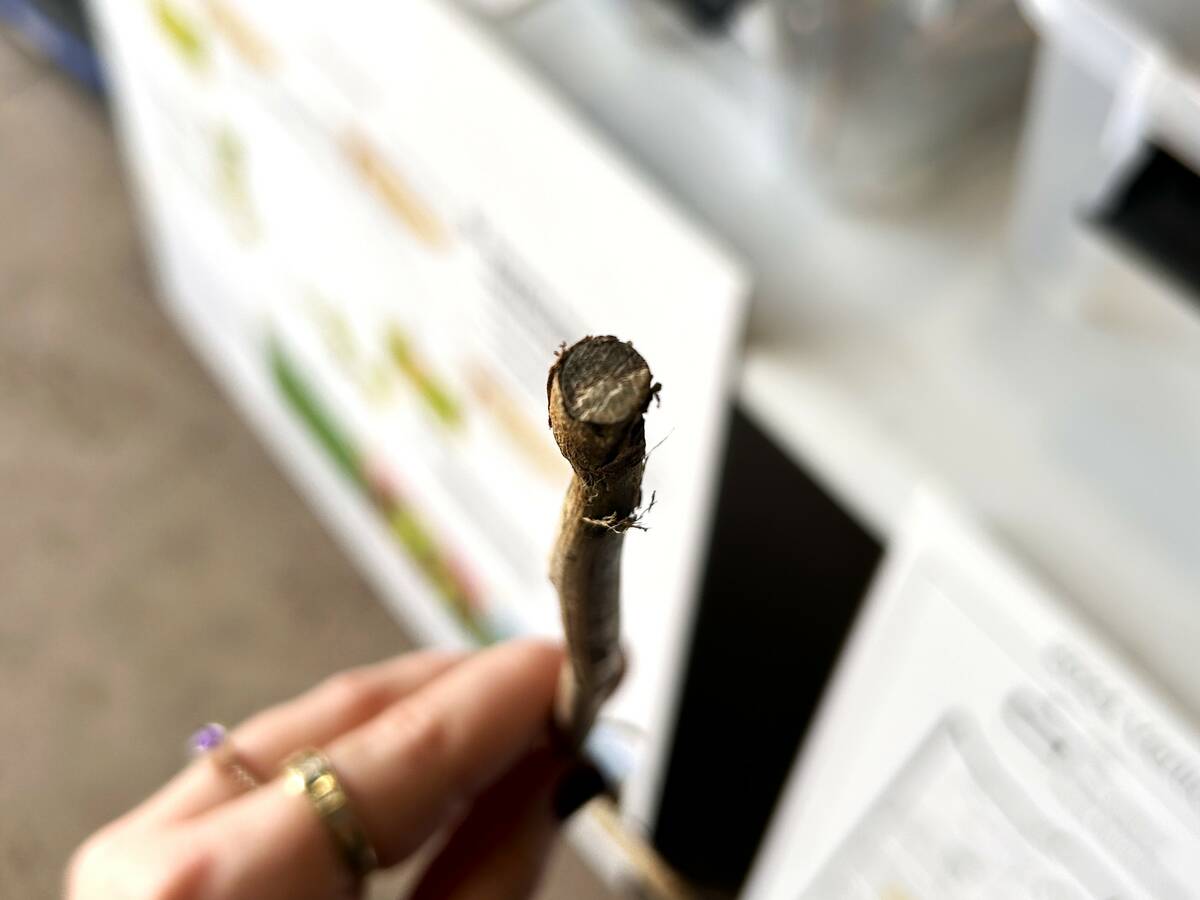SOUTHWEST REGION
Rainfall over the past week varied from 10 to 50 mm.
The majority of cereal crops are in the dough stage. Producers have started desiccating winter wheat and some producers have started cutting fall rye. The late-seeded and reseeded canola crop is still flowering. Some flax fields are showing colour change. Sunflower crops are starting to bud and the odd field is showing flowers. Producers continue to monitor sunflower fields for rust. The early-planted cornfields are starting to tassel. Overall moisture conditions are good.
Read Also

Manitoba canola embattled by verticillium
Verticillium stripe pressure has been growing in Manitoba, and canola farmers still have precious few tools to protect their crop from the disease.
Producers continue to monitor grasshopper levels. Producers are starting second cut of alfalfa with yields being reported as average. Most areas are still reporting tight feed supplies.
Recent rains will help pastures in some areas; however in pastures that are under grazing pressure, the rain may not be as beneficial. Some producers have started to supplement feed.
NORTHWEST REGION
Precipitation for the past week ranged from six mm in Ste. Rose, 25 mm in Roblin and Swan River areas to 30 mm around Dauphin.
Cereal crops are filling with a few early-seeded fields beginning to turn colour. Where crop development and weather conditions are favourable for disease development, fusarium fungicides are being applied. The majority of the canola crops are podding.
First-cut haying has been a challenge due to inclement weather. Hay yields are half to three-quarters of normal with declining feed values because of weather and maturing stands. Earlier-cut alfalfa fields are showing good regrowth for second cut or grazing, although the delayed growing season will delay harvest. Early-seeded cereal fields are being harvested for green feed and silage. Recent rainfall has improved pasture conditions, but they are still rated as fair.
CENTRAL REGION
Small cloudbursts and showers kept conditions humid but precipitation amounts were low. Crop growth has been slow. Crop damage in areas hit hardest by excess moisture has become more evident.
Canola continues to bloom; the earliest-seeded fields are podding and are done flowering. Cereals range from heading to hard-dough stage and are relatively free of disease. Low fusarium head blight incidence is reported to date.
Small pin beans are noticeable in edible bean fields. Flowering continues. Fungicide application for white mould is taking place in select fields with good yield potential. Pod formation has started in soybean fields; most fields are flowering. Bacterial blight and root rot diseases are showing up in soybeans. Sunflowers range widely in height, even within fields; staging ranges from R3 to R5. Corn fields are tasselling. Flax crops range from early in flower to being nearly finished flowering. Fall rye is ripe. Winter wheat is turning and preharvest glyphosate applications have begun. Fusarium head blight incidence is low.
Grasshoppers continue to be an issue. Lygus bug monitoring continues in sunflowers. Cereal aphids have been reported; numbers have not warranted insecticide application.
Perennial forage grass seed crops are being cut.
High humidity and wet weather has caused some problems with haying. Second-cut dairy-quality hay is 40 to 50 per cent complete. Hay yields are estimated at two to 2.5 tonnes/ acre for alfalfa and 1.75 tonnes/ acre for alfalfa/grass.
EASTERN REGION
Warm-season crops are advancing slowly. Sporadic rainfall events resulted in variable accumulations. Soil moisture conditions are rated as full across the region.
Crop development throughout the region remains variable. Winter wheat appears to be about one week away from maturity. Early-seeded canola is well into pod fill. Most of the late-seeded crop is past 50 per cent bloom stage. Soybeans are in the R2 to R4 stage. Field peas are pod filling. Flax is at the end of flowering and primarily pod filling with the exception of late-seeded crops. Corn is just starting to silk on early-seeded fields but about 40 per cent of fields have not started to tassel. Sunflowers are at the R4 to R5.5 stage.
Hayfield and pasture land conditions are rated as good. Second cut is underway and yields look to be slightly below normal.
INTERLAKE REGION
Rainfall over the past week resulted in accumulations ranging from seven to 60 mm.
Cereal crops range in development. North Interlake cereal crops are headed, except for late-seeded green feed crops. Canola crops range from mid-bloom to podded. Corn crops in the south Interlake vary in maturity ranging from the tassels just becoming visible to early-silking stage. Warmer weather would be welcome for all crops.
Grass seed crops have finished flowering and are approaching harvest. Alfalfa seed crops are showing seed set.
Haying has been at a standstill for two weeks as scattered showers continue. Prolonged harvesting has led to lower-quality feed. Yields are generally below normal. Many fields in the northeast portion of the Interlake have ponding water and are too soft for equipment travel.














